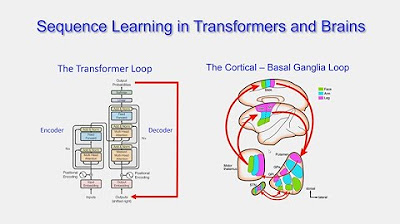Quand les neurosciences rencontrent l’éducation | Eric Gaspar | TEDxAlsace
Summary
TLDRIn this educational talk, the speaker discusses the importance of understanding how the brain functions, particularly in relation to learning and intelligence. Through anecdotes and neuroscience discoveries, the speaker debunks common myths such as the idea that intelligence is fixed from birth, the belief that the brain can multitask effectively, and the misconception that the brain stops changing after a certain age. The speaker highlights the brain's ability to adapt and grow through neuroplasticity, encouraging a shift in mindset for better learning and personal growth.
Takeaways
- 😀 The importance of understanding the brain's function: Like F1 drivers knowing their cars, it's essential for educators and students to understand how the brain works in learning and memory.
- 😀 Many students still believe intelligence is fixed at birth, which limits their learning potential. Recent neuroscience shows the brain can develop and improve throughout life.
- 😀 Neurosup project: The speaker's initiative aims to bridge the gap between neuroscience and education by helping teachers and students understand the links between brain function and learning methods.
- 😀 The brain doesn't just store information; it can also erase it. It discards information it deems unnecessary, which can affect memory retention.
- 😀 Memory is influenced by perceived utility: Information that seems useful for the near future is more likely to be remembered.
- 😀 Multitasking is a myth: The brain cannot perform two tasks simultaneously with full attention. Instead, it alternates between tasks, which can reduce overall efficiency.
- 😀 A common example of multitasking is driving while texting. The brain switches between activities, leading to risks and inefficiencies.
- 😀 Instead of multitasking, focusing on one task at a time (monotasking) enhances performance, as the brain can dedicate full attention to a single activity.
- 😀 Brain plasticity: The brain is constantly reorganizing itself. It is not fixed once we reach adulthood; it continues to adapt and change, especially through activities like playing an instrument.
- 😀 Through brain plasticity, we can overcome the myth of being 'stuck' in our abilities. We can improve skills, even in adulthood, because the brain can constantly rewire itself to accommodate new learning.
Q & A
What is the main misconception about intelligence that the speaker addresses?
-The speaker addresses the misconception that intelligence is fixed at birth, and cannot change. They highlight recent scientific findings showing that intelligence can be developed over time through brain stimulation.
Why do some students struggle with academic progress according to the speaker?
-The speaker explains that some students believe their intelligence is fixed, leading them to limit their own potential. This mindset contributes to them plateauing in their academic performance.
What is the relationship between brain stimulation and intelligence development?
-The speaker emphasizes that the more the brain is stimulated in varied ways, the more it can develop. This contradicts the idea that intelligence is unchangeable.
What role does the brain’s ability to ‘erase’ information play in memory?
-The brain often erases information it deems unnecessary for future use. This explains why we may forget certain details, like names, unless we perceive them as immediately useful or important.
How does the speaker use a video to explain how memory works?
-The speaker shows a video of a character failing to remember names, demonstrating that the brain only remembers what it finds useful. In this case, the character did not see the value in remembering the names, so they were forgotten.
What is the key takeaway about memory from the video demonstration?
-The key takeaway is that memory is not just about recording information but also about what the brain deems important enough to retain. Providing context or purpose for the information can help the brain prioritize it for memory.
Does the brain truly multitask? What does research say?
-No, the brain does not truly multitask. Research confirms that the brain switches attention between tasks, focusing on one at a time. Multitasking is actually rapid alternation between activities, not simultaneous processing.
How does the brain perform tasks when driving and texting, for example?
-When driving and texting, the brain alternates between focusing on driving and composing a message, rather than doing both at the same time. This can lead to mistakes, as attention is divided.
What advice does the speaker offer about multitasking in daily life?
-The speaker advises against multitasking, recommending that we focus on one task at a time (monotasking). This approach is more efficient and aligns with how the brain functions.
What is neuroplasticity, and how does it affect learning?
-Neuroplasticity refers to the brain's ability to reorganize and form new neural connections throughout life. This ability allows individuals to continue learning, improving, and adapting, even into adulthood.
Outlines

This section is available to paid users only. Please upgrade to access this part.
Upgrade NowMindmap

This section is available to paid users only. Please upgrade to access this part.
Upgrade NowKeywords

This section is available to paid users only. Please upgrade to access this part.
Upgrade NowHighlights

This section is available to paid users only. Please upgrade to access this part.
Upgrade NowTranscripts

This section is available to paid users only. Please upgrade to access this part.
Upgrade NowBrowse More Related Video

How computers are learning to be creative | Blaise Agüera y Arcas

The Neuroscience of Learning - Bruce McCandliss

How menopause affects the brain | Lisa Mosconi

CARTA: Computational Neuroscience and Anthropogeny with Terry Sejnowski

How literature can help us develop empathy | Beth Ann Fennelly | TEDxUniversityofMississippi

Educational Neuroscience: Your Child’s Brain and Early Literacy with Bruce McCandliss
5.0 / 5 (0 votes)